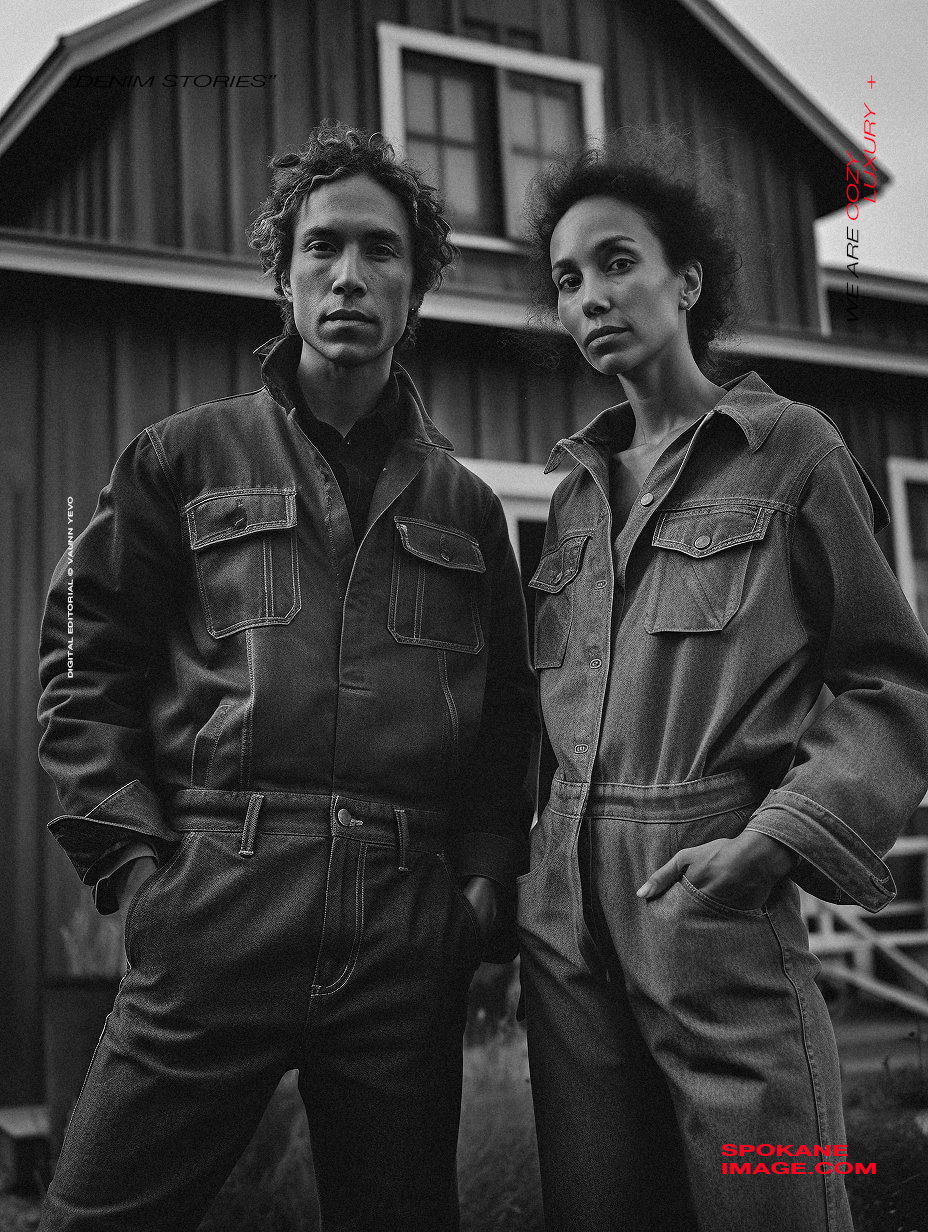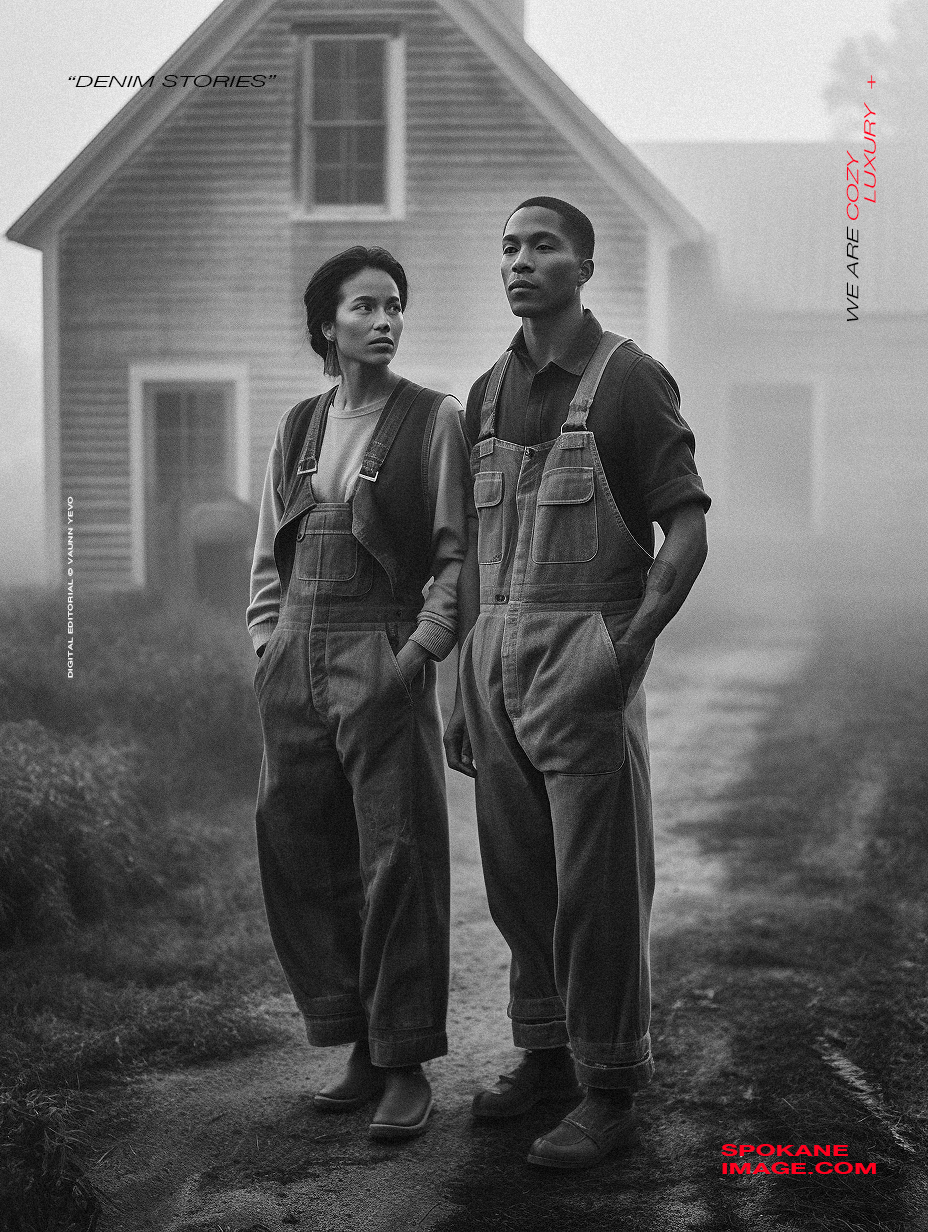Denim Stories
"Cesar Chavez and the Farm Workers' Movement"
Cesar Chavez, a labor leader and civil rights activist, played a significant role in advocating for the rights of migrant farm workers in the 1960s and 1970s. The denim jacket, commonly worn by farm workers, became a symbol of their struggle and resilience.
Chavez founded the National Farm Workers Association, which later became the United Farm Workers (UFW). Through nonviolent protests, strikes, and boycotts, the UFW fought for fair wages, improved working conditions, and better treatment for agricultural laborers.
During rallies and demonstrations, the denim jackets adorned with UFW insignias and slogans served as a unifying symbol of solidarity and dignity. The farm workers' movement, with denim at its core, highlighted the importance of fighting for equal rights and social justice for marginalized communities.
"Rosie the Riveter:
Denim and Women's Empowerment"
During World War II, with many men serving in the military, women stepped into the workforce to support the war effort. Denim overalls became a common sight as women took on industrial jobs, including manufacturing aircraft, ammunition, and machinery.
The iconic image of "Rosie the Riveter" emerged during this time, representing the strength and capability of women in the workforce. Rosie, often depicted wearing denim overalls and a bandana, became a symbol of women's empowerment and a catalyst for societal change.
Denim, through its association with Rosie the Riveter, served as a visual reminder of the contributions women made during wartime and paved the way for increased gender equality in the decades that followed.
"Denim and the Women's Suffrage Movement"
In the late 19th and early 20th centuries, women fought tirelessly for their right to vote. As they campaigned for suffrage, women across the United States adopted practical clothing choices, including denim skirts and trousers, allowing them to participate in protests, rallies, and parades more comfortably.
The adoption of denim by suffragettes challenged traditional gender norms and highlighted the need for equal rights. By donning denim, women made a visual statement, demonstrating their independence, resilience, and determination to secure voting rights for all.
The women's suffrage movement, with denim as a symbol of progress and equality, eventually led to the ratification of the 19th Amendment in 1920, granting women the right to vote.
"Denim and the Civil Rights Movement"
During the Civil Rights Movement of the 1950s and 1960s, denim jeans played a role in the fight against racial segregation and discrimination. Activists and freedom fighters, regardless of their skin color, wore denim as they marched, protested, and endured violence in their struggle for racial equality.
Denim, a practical and durable fabric, provided a sense of unity among activists. It erased social and economic divisions, emphasizing that everyone, regardless of their background, had a shared goal of achieving justice and equal rights.
Through their courageous actions, the civil rights activists demonstrated the power of unity and the indomitable spirit of those who strive for a more just society.
"Stonewall and the Denim Revolution"
In the summer of 1969, the LGBTQ+ community faced widespread discrimination and persecution. In the early morning hours of June 28, a police raid took place at the Stonewall Inn, a popular gay bar in New York City. Frustration and anger ignited among the patrons, leading to several days of protests and clashes with law enforcement.
During these historic events, denim played an unexpected role. Many members of the LGBTQ+ community, who were often marginalized and excluded, found solace and camaraderie within the denim-clad counterculture movement. Denim jeans became a symbol of rebellion and resistance against societal norms, breaking down barriers and demanding equal rights for all.
The Stonewall uprising marked a turning point in the fight for gay rights and paved the way for significant progress in LGBTQ+ rights movements across the United States.
"The Levi's 501:
A Global Icon of Inclusion"
Levi Strauss, a German immigrant, founded Levi Strauss & Co. in San Francisco in 1853, introducing durable denim overalls to the American workforce. Over the years, Levi's jeans gained popularity and became an iconic symbol of American fashion.
Throughout its history, Levi's has consistently championed inclusivity and diversity. From the early 20th century, when Levi's jeans were worn by women working in factories during World War II, to the present day, when Levi's actively supports LGBTQ+ rights, the brand has stood for equality.
The introduction of the Levi's 501 in 1890 further revolutionized denim fashion. This classic pair of jeans, known for its straight leg and button fly, was designed to fit people of all shapes, sizes, and genders. Levi's commitment to inclusivity continues to inspire other denim brands and shapes the fashion industry's understanding of diverse body types.
"Denim and the Native American Civil Rights Movement"
Throughout history, Native American communities have faced significant challenges, including forced assimilation, cultural erasure, and limited rights. In the 1960s and 1970s, as Native Americans began advocating for their civil rights, denim garments became an integral part of their protest attire.
Activists, such as those involved in the American Indian Movement (AIM), often wore denim jackets and jeans as they fought against discrimination and fought for tribal sovereignty and cultural preservation.
Denim, in this context, represented resistance against oppressive policies, a reclaiming of identity, and a demand for justice and equal rights for Native American communities.
The Native American civil rights movement brought attention to the unique struggles faced by indigenous peoples, ultimately contributing to increased recognition and respect for their rights and cultural heritage.
"The Chicano Movement and the Pachuco Style"
In the 1940s, young Mexican Americans in urban areas developed a distinctive fashion style known as Pachuco. This counter-cultural movement embraced flamboyant and exaggerated fashion, with participants donning wide-brimmed hats, long coats, and, notably, high-waisted, baggy denim pants called "zoot suits."
The Pachuco style became a symbol of resistance and cultural pride for the Chicano community, who faced discrimination and prejudice. Pachucos used fashion as a means of asserting their identity and challenging societal norms.
The zoot suits, made from denim and other fabrics, represented a fusion of American and Mexican influences, celebrating diversity and showcasing the creativity of the Chicano youth. The Pachuco style sparked conversations about cultural expression, self-identity, and the pursuit of equal rights within the Chicano movement.

















